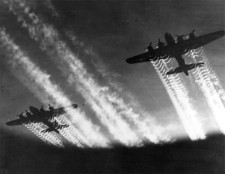Same-Sex Marriage Referendums: Major Metropolitan Areas Out of Step With Less Populated Regions
In most states same-sex marriage has become the law of the land by judicial decision. In a smaller number, the institution has been recognized by acts of the state legislature. Although there were numerous public referendums attempting to ban same sex marriage before 2008, in recent years only twice have the voters of a state had the opportunity to vote directly on the recognition of marriages between individuals of the same gender.
Both opportunities came in November 2012, as voters in Maryland and Washington State confirmed their state’s recognition of a new definition of marriage. However, both episodes revealed a sharp divide between the majority views of those who live in major metropolitan areas and those who live in less densely populated areas.
The Maryland referendum, like the one in Washington, was actually an effort, permitted under the laws of both states, to overturn an earlier statute. In February of 2012, the Maryland General Assembly narrowly approved a bill recognizing same-sex marriage, known as the Civil Marriage Protection Act. The bill was enacted by votes of 72-67 in the House of Delegates and 25-22 in the Senate and subsequently signed on March 1 by Governor Martin O’Malley.
However, by June, opponents of the bill had secured enough signatures to place the issue on the state’s ballot the following November.
The effort to override the legislation ultimately failed by a margin of 52.4% to 47.6%, but the geographic breakdown of the vote revealed that 18 of the state’s 24 counties actually voted to overturn the same-sex marriage statute. All six of the counties in which the repeal measure failed were located either in metropolitan Baltimore or metropolitan Washington, D.C. Even in these metropolitan areas, an equal number of counties (six) voted to overturn the law. The measure even carried in predominantly black Prince Georges County, which is part of the D. C. suburbs. (Overall, exit polls suggest that a majority of black Marylanders voted to override the statute.)
In the state’s twelve counties that are not part of either metropolitan Washington or Baltimore, the referendum to overturn the statute received the support of substantial majorities, and in seven of the twelve support for overturning the statute ranged from 60.9% to 73.1% of voters. The largest majorities were compiled in the rural, largely white, counties of Appalachian western Maryland and in the rural, racially-mixed counties of the Eastern Shore.
The largest majorities in support of the statute were compiled in suburban Washington’s Montgomery County, in the City of Baltimore (which is effectively a separate county in Maryland), and Howard County, which includes the suburbs south of Baltimore.
Outside of the six counties that supported the same-sex marriage statute, the combined vote in Maryland was 54.9% to overturn the statute and 45.1% to uphold it. In the twelve counties that were not part of the Washington or Baltimore metropolitan areas, the percentages were 59.5% to overturn the statute and 40.5% to uphold it. (Of course, a decade earlier, who would have believed that 40% of the voters in rural Maryland would support same-sex marriage?)
The November 2012 referendum was part of the same election that saw Maryland cast 62.1% of its votes for Barack Obama for president and only 36.6% for Mitt Romney. In only five other jurisdictions—District of Columbia, Hawaii, New York, Rhode Island, and Vermont—did the re-elected president do better than he did in Maryland.
The story in Washington State is a similar one. A bill recognizing same-sex marriage passed the Washington Senate by a vote of 28-21 on February 1, 2012, and the state House of Representatives by 55-43 on February 8. Five days later the bill was signed into law by Gov. Christine Gregoire. However, as in Maryland, opponents of the law gathered enough signatures to force a statewide referendum on the new statute.
On November 6, in what was officially designated as Referendum 74, Washington voters upheld the statute by a margin of 53.7% to 46.3%, a difference slightly larger than in Maryland.
As in Maryland, the large population of the state’s major metropolitan area overrode the wishes of the largest part of the state, at least in geographic terms. Twenty-nine of the state’s 39 counties voted to override the legislature—and 15 by margins of better than 60%-40%–but their votes were offset by those of the other ten, nine of which bordered on the Puget Sound in western Washington.
In King County (which includes Seattle), the same-sex marriage bill passed by a margin of 67% to 33%. In the other nine Puget Sound counties, a majority of voters supported the bill, but the margin was a much closer 52.7% to 47.3%. However, in the other 29 counties, the margin on Referendum 74 was 58.1% to 41.9% to overturn the statute.
As in Maryland, one could argue that it is remarkable that in 2012, slightly more than 40% of the population of the “conservative” parts of Washington State were willing to support the concept of same-sex marriage. In 2012, President Obama won Washington State over Mitt Romney by a margin of 56% to 41%.
More than five decades ago, the “one-person, one-vote” rulings of the Warren Court, especially Baker v. Carr and Reynolds v. Sims, dramatically shifted the balance of political power from rural to urban areas in many states. The same-sex marriage “referendums” in Maryland and Washington are reminders of how significant those decisions continue to be.


 As I have
As I have